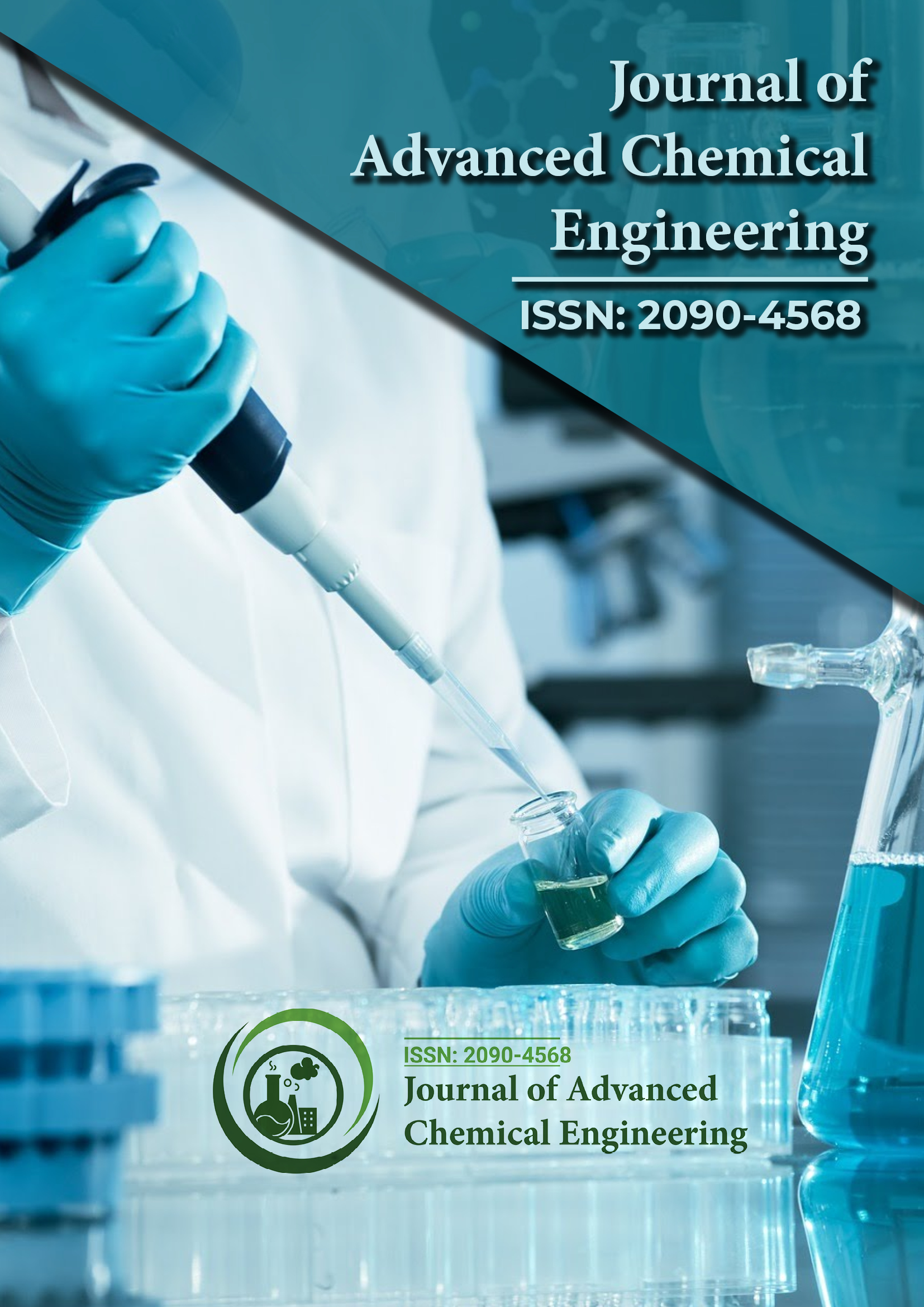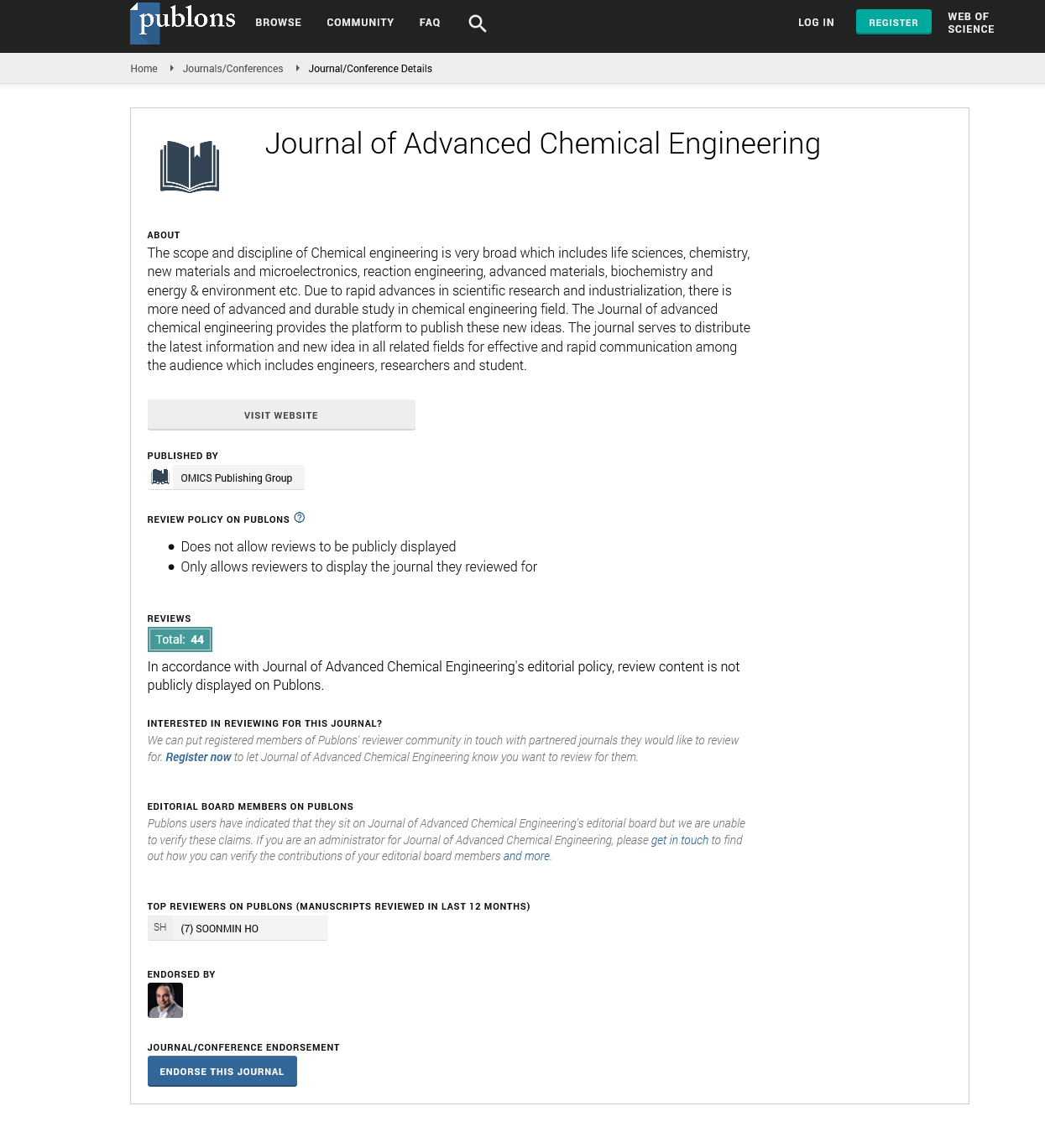Indexed In
- Open J Gate
- Genamics JournalSeek
- Smithers Rapra
- RefSeek
- Directory of Research Journal Indexing (DRJI)
- Hamdard University
- EBSCO A-Z
- OCLC- WorldCat
- Scholarsteer
- Publons
- Geneva Foundation for Medical Education and Research
- Google Scholar
Useful Links
Share This Page
Journal Flyer

Open Access Journals
- Agri and Aquaculture
- Biochemistry
- Bioinformatics & Systems Biology
- Business & Management
- Chemistry
- Clinical Sciences
- Engineering
- Food & Nutrition
- General Science
- Genetics & Molecular Biology
- Immunology & Microbiology
- Medical Sciences
- Neuroscience & Psychology
- Nursing & Health Care
- Pharmaceutical Sciences
Opinion Article - (2024) Volume 14, Issue 2
Chemical Engineering Approaches for Transforming Waste Plastics to Polyolefin Upcycling
Yujing Tao*Received: 20-May-2024, Manuscript No. ACE-24-26624; Editor assigned: 22-May-2024, Pre QC No. ACE-24-26624 (PQ); Reviewed: 05-Jun-2024, QC No. ACE-24-26624; Revised: 12-Jun-2024, Manuscript No. ACE-24-26624 (R); Published: 19-Jun-2024, DOI: 10.35248/2090-4568.24.14.338
Description
Polyolefins, including Polyethylene (PE) and Polypropylene (PP), are among the most widely used plastics globally due to their versatility and durability. However, their persistence in the environment poses significant environmental challenges. To address this issue, chemical upcycling offers a viable approach for converting polyolefins into valuable liquid refinery feedstock.
Understanding polyolefins and their environmental impact
Polyolefins are polymers derived from olefins such as ethylene and propylene. They are prevalent in a range of applications, from packaging materials to automotive parts.
Chemical structure and properties: Polyolefins are characterized by long chains of carbon atoms with hydrogen atoms attached, forming stable and non-reactive structures. This stability is beneficial for product durability but problematic for waste management.
Challenges in waste management: The recalcitrant nature of polyolefins means that conventional recycling methods, such as mechanical recycling, often fail to produce high-quality secondary products. Therefore, advanced chemical processes are necessary to convert these materials into useful substances.
Chemical upcycling of polyolefins
Chemical upcycling involves breaking down polyolefins into simpler molecules that can be reconstituted into valuable products. The focus is on converting polyolefins into liquid refinery feedstock, which can be used in the production of fuels, chemicals, and other high-value products.
Pyrolysis: Pyrolysis is a thermal decomposition process conducted in the absence of oxygen. This method converts polyolefins into a mixture of gases, liquids, and solid residues. The liquid fraction obtained from pyrolysis can be upgraded to produce high-quality feedstock for refineries.
Hydrocracking: Hydrocracking is a catalytic process that involves the use of hydrogen to break down complex hydrocarbons into lighter, more valuable products. This technique is particularly useful for upgrading the liquid products obtained from pyrolysis.
Solvolysis: Solvolysis involves the use of solvents to break down polyolefins into smaller, more manageable molecules. This method can be reduced to produce specific products depending on the solvent used.
Oxidative degradation: Oxidative degradation involves the reaction of polyolefins with oxidizing agents to break down the polymer chains. This method can be used to convert polyolefins into liquid products.
Circularity in chemical upcycling
Circularity refers to the principle of designing systems that maximize resource efficiency and minimize waste. In the context of chemical upcycling, circularity involves integrating upcycling processes into existing waste management and recycling systems to create a sustainable lifecycle for polyolefins.
Integration with recycling systems: Chemical upcycling can be integrated with mechanical recycling systems to handle mixed plastic waste. This approach allows for the processing of polyolefins that are not suitable for mechanical recycling, turning them into valuable feedstock.
Life Cycle Assessment (LCA): LCA is a tool used to evaluate the environmental impact of a product or process throughout its lifecycle. Applying LCA to chemical upcycling processes helps assess their sustainability and identify areas for improvement.
Economic viability: The economic viability of chemical upcycling is a critical factor in its adoption. The costs associated with upcycling processes, including feedstock preparation, reaction conditions, and product upgrading, must be evaluated.
Challenges and future directions
Technological advancements: Continued research and development are necessary to advance chemical upcycling technologies. Innovations in catalysts, reaction conditions, and process integration can improve the efficiency and scalability of upcycling processes.
Regulatory and policy frameworks: Supportive regulatory and policy frameworks are essential for promoting the adoption of chemical upcycling technologies. Policies that incentivize recycling and upcycling can drive investment and innovation in this field.
Public awareness and engagement: Increasing public awareness and engagement is important for the success of chemical upcycling initiatives. Educating stakeholders about the benefits of upcycling and its role in sustainable waste management can drive adoption and support.
Citation: Tao Y (2024) Chemical Engineering Approaches for Transforming Waste Plastics to Polyolefin Upcycling. Adv Chem Eng. 14.338.
Copyright: © 2024 Tao Y. This is an open-access article distributed under the terms of the Creative Commons Attribution License, which permits unrestricted use, distribution, and reproduction in any medium, provided the original author and source are credited.

